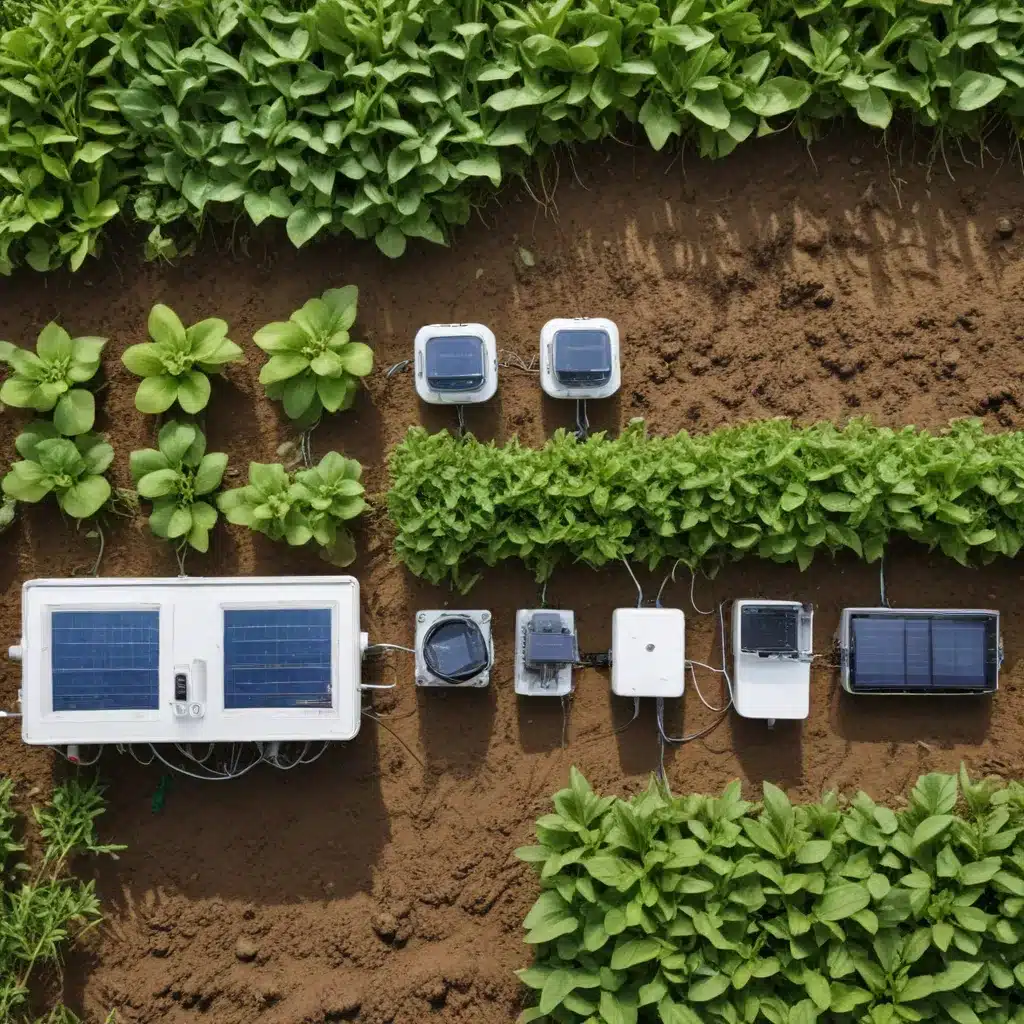
Understanding the Role of IoT in Sustainable Agriculture
In the face of global challenges like climate change, population growth, and resource scarcity, the agriculture industry is under immense pressure to become more efficient, productive, and eco-friendly. Fortunately, the emergence of the Internet of Things (IoT) has opened new avenues for revolutionizing agricultural practices and driving sustainable growth.
IoT-based environmental monitoring systems have the potential to transform the way farmers and agricultural organizations approach resource management, crop health, and overall operational efficiency. By leveraging interconnected sensors, data analytics, and automation, these systems provide real-time insights that enable data-driven decision-making and precision farming techniques.
The Benefits of IoT-Based Environmental Monitoring in Agriculture
IoT-based environmental monitoring systems offer a range of benefits that can significantly enhance the sustainability and productivity of agricultural operations. Let’s explore some of the key advantages:
Optimized Resource Management
IoT-based monitoring systems collect real-time data on various environmental factors, such as soil moisture, temperature, and humidity. This information can be used to automate and fine-tune irrigation schedules, ensuring that crops receive the precise amount of water they need without wastage. By optimizing resource utilization, farmers can reduce input costs while promoting water conservation and energy efficiency.
Enhanced Crop Health Monitoring
IoT sensors can be strategically placed throughout the farm to monitor crop health indicators, including nutrient levels, disease presence, and pest infestations. This early detection of issues allows farmers to take timely, targeted action, such as applying fertilizers or pesticides only where needed. This approach not only improves crop yields but also minimizes the environmental impact of excess chemical application.
Data-Driven Decision-Making
The wealth of data collected by IoT-based monitoring systems enables farmers to make more informed, data-driven decisions. From optimizing planting schedules and harvesting times to adjusting cultivation practices based on real-time insights, this data-driven approach can significantly enhance overall farm productivity and efficiency.
Sustainable Farming Practices
By reducing waste, optimizing resource use, and implementing precision farming techniques, IoT-based environmental monitoring systems contribute to the adoption of more sustainable agricultural practices. This not only benefits the environment but also helps ensure long-term food security and ecosystem health.
Real-World Examples of IoT-Based Environmental Monitoring in Agriculture
IoT-based environmental monitoring systems are already being implemented in various agricultural settings, demonstrating their transformative potential. Let’s explore a few compelling examples:
Livestock Monitoring
IoT-based livestock monitoring systems use wearable sensors to track the vital signs, location, and behavior of animals in real-time. This enables farmers to receive alerts about potential health issues, breeding cycles, or unusual movements, allowing for timely interventions. These systems help improve animal welfare, optimize feeding, and reduce losses due to illness or accidents.
Precision Irrigation
IoT sensors can be deployed to monitor soil moisture, weather conditions, and crop water needs, automatically adjusting irrigation systems based on real-time data. This precision irrigation approach reduces water consumption, conserves energy, and enhances crop growth by ensuring that plants receive the optimal amount of water.
Precision Agriculture
IoT-enabled precision agriculture involves the use of sensors, GPS-guided equipment, and data analytics to monitor and manage micro-level variables, such as soil conditions, pest populations, and crop health. This data-driven approach enables farmers to apply inputs like fertilizers and pesticides only where and when needed, improving crop yields, reducing input waste, and enhancing overall farm operations.
Overcoming the Challenges of IoT Adoption in Agriculture
While the benefits of IoT-based environmental monitoring systems are compelling, there are also some challenges that organizations must address when implementing this technology in the agricultural sector. Here are a few key considerations:
Financial Barriers
The initial cost of implementing IoT technology in agriculture can be high, as it requires specialized sensors, software, and communication networks. This financial burden can be a significant hurdle, especially for small and medium-sized farms with limited resources.
Connectivity Challenges
Many rural and remote farming areas face unreliable or limited internet connectivity, which is essential for IoT systems to function effectively. Poor signal strength or lack of network infrastructure can lead to data transmission delays or system failures, limiting the full potential of IoT technology in these regions.
Technical Expertise Requirement
IoT-based agriculture systems often require a certain level of technical expertise to operate and maintain. Farmers with limited technological experience may struggle to interpret data, troubleshoot issues, and optimize the system for their specific farm conditions, hindering widespread adoption.
Data Privacy and Security Concerns
IoT systems collect vast amounts of sensitive data about farm operations, raising concerns about data privacy and security. Unauthorized access to this information can lead to breaches that compromise farm operations or result in financial losses. Ensuring robust cybersecurity measures and clear data ownership policies is crucial but can add complexity and cost to IoT adoption.
The Future of IoT in Sustainable Agriculture
As the agriculture industry continues to evolve, the role of IoT-based environmental monitoring systems is expected to become even more prominent. Emerging technologies like artificial intelligence and machine learning are poised to enhance the predictive analytics and automation capabilities of these systems, further improving efficiency and sustainability.
As sensor technology becomes more affordable and data connectivity improves, IoT systems will become more accessible to a wider range of farmers, driving widespread adoption. The future of IoT in agriculture promises even greater advancements, with the potential for more integrated solutions that seamlessly manage every aspect of farming, from soil health to crop yield optimization.
By embracing IoT-based environmental monitoring systems, the agriculture industry can unlock new levels of efficiency, productivity, and sustainability, ultimately contributing to the long-term health of our planet and food security for generations to come. To learn more about IoT solutions for sustainable agriculture, visit https://itfix.org.uk/.












